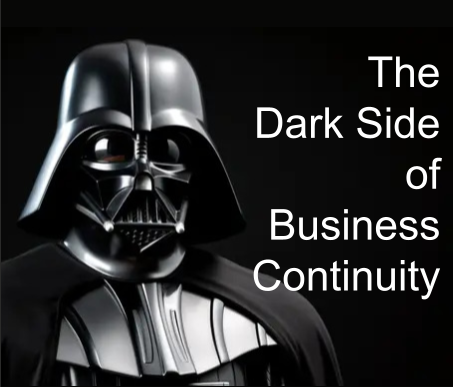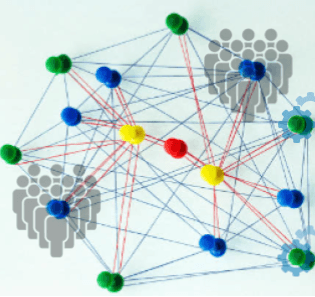Are You Really
Doing a Business Impact Analysis?
For many organisations, the term "Business Impact Analysis" (BIA) brings to mind a template - a form to be filled out, questions to be answered, and data to be collected. The very mention of a BIA can make eyes roll and even trigger heated debate. The assumption is often that once this template is complete, the BIA is done. This type of BIA should never have existed and should be dead.
This approach misses the true purpose and value of a BIA. When done right, the BIA is much more than a box-ticking exercise - it’s a strategic tool that reveals vulnerabilities, strengthens resilience, and informs better decision-making. Its real value lies not in a completed template but in the process: of analysing, questioning, and interpreting information to understand how disruptions could truly impact your organisation. Conducting a BIA requires critical thinking, deep analysis, and continuous engagement with the data to remain relevant. To put it another way, a BIA is not just a noun, it’s also a verb…not just an artefact but an activity.
The Value of Doing a BIA Well
A well-executed BIA transcends business continuity management (BCM); it equips operational leaders, risk managers, and finance teams with actionable insights. These insights can uncover vulnerabilities in operations, dependencies, and supply chains, streamline critical processes, and even highlight cost-saving opportunities. Beyond continuity planning, a BIA can drive value across strategic planning, resource allocation, and risk management.
Most importantly, the purpose of a BIA is to predict the consequences of disruptions and gather the information needed to develop effective prevention and recovery strategies.
By exploring dependencies, vulnerabilities, and potential impacts, the BIA facilitates effective conversations that shape informed decision-making. While identifying challenges is part of the process, the ultimate goal is to provide a foundation for practical, effective solutions that enhance both resilience and agility.
As emphasised in the Business Continuity Institute's Good Practice Guidelines (GPG), the BIA clarifies priorities and dependencies. But it can also pave the way for evaluating the cost-effectiveness of recovery strategies - a topic we’ll explore further in a future article.
So how do we do a good BIA? We will get to that, I promise. But first, let's explore what we mean by
analysis, how BIAs can help us understand complex systems and how, when done well, they can play a key role in building or supporting a culture high in trust, autonomy and ownership behaviours.
Collecting Data Isn’t Enough - Analysis is Key
The name says it all: Business Impact
Analysis. While gathering data about key processes, resources, and recovery time objectives (RTOs) is a starting point, it’s about
analysing the information you collect to uncover meaningful insights that help your organisation understand how disruptions could affect its ability to operate and achieve strategic goals. This is where many BIAs fall short.
Key questions the analysis should answer include:
- Which processes are truly critical?
Not all processes are created equal. A BIA identifies those essential for survival and success. While many may seem important, a thorough analysis will reveal which ones are absolutely essential for the business to function and thus, which must be prioritised for recovery when priority calls are needed.
- What dependencies exist that could escalate an impact?
Internal and external dependencies can create cascading effects. A BIA brings these to light uncovering how one failure might cascade through the organisation, impacting other areas that initially seem unaffected.
- How do different types of impacts influence decision-making?
Operationally critical processes don’t always equate to high financial impact, and vice versa. A comprehensive analysis may consider a range of possible impacts, for example, the FORCES
[1]
(financial, operational, reputational, customer and supplier relationships, environmental, and staffing). This ensures decisions are informed by the whole picture. By aligning these perspectives, organisations can better understand trade-offs and prioritise actions that support overall resilience.
Seeing the Bigger Picture: Prioritising Recovery in Complex Systems
For smaller, highly autonomous teams, recovery priorities may seem intuitive. But in large organisations and sprawling enterprises, with complex interdependencies, the scale and complexity can make this level of intuitive understanding unrealistic. Dependencies across teams, functions, and systems can go unnoticed, leading to blind spots that could increase the severity of a disruption and its impacts.
Enablement for All
Even teams that see themselves as self-contained and
autonomous may discover through a BIA that they play a critical role in enabling other parts of the organisation. Conversely, these teams may already recognise their importance but struggle to get the support they need to build and prove resilience.
The BIA process provides an opportunity for these teams to articulate their concerns, dependencies, and needs in a structured and strategic way. By using the language and channels of the BIA, they can elevate these issues to senior leaders, ensuring they are heard and understood within the broader context of organisational resilience. This makes the BIA not just a tool for analysis but a channel for advocacy and alignment across the business.
Building Trust
And of course, in modern management paradigms, a culture of trust is as important as ever.
Trust is built with transparency. Teams can increase transparency by engaging with a BIA process.
How to Conduct a BIA That Delivers Value
As we've discussed, an effective BIA requires thoughtful interpretation and collaboration. Here’s how to ensure your process delivers actionable insights:
- Engage Key Stakeholders Continuously
Involve decision-makers and subject matter experts throughout. Their input ensures data accuracy and builds buy-in for prioritisation decisions.
Their insights can help you verify which processes are truly critical and how their disruption would ripple through the business.
Balancing Internal Knowledge and External Expertise
While having a deep understanding of the organisation is important, the value of a BIA often lies in the ability to ask the right questions and challenge assumptions. External partners, though not as embedded in the day-to-day operations, bring fresh perspectives, objectivity, and experience from working across different industries. They’re skilled in identifying gaps, asking probing questions, and ensuring the analysis uncovers what truly matters, even in complex systems.
This combination of organisational knowledge and expert facilitation ensures the BIA process is thorough, insightful, and ultimately more effective. Whether as a supplement to internal teams or a full partnership, external expertise can make all the difference in ensuring a robust BIA that delivers real value.
- Validate Assumptions and Dig Deeper
Don’t settle for surface answers like “This process is critical.” Ask why it’s critical, explore its dependencies, and test recovery estimates.
One of the most common traps in a BIA is taking initial responses at face value. Simply writing down the first answers to “Which processes are critical?” or “What are the consequences of downtime?” doesn't provide a full picture. Ask follow-up questions and challenge assumptions. Why is that process critical? What would happen if it failed for longer than the estimated recovery time?
But take care not to ask questions that you don’t need the answers to. ‘Analysis paralysis’ can set in when digging too deeply.
- Use Scenarios to Understand Impact
Simulate realistic disruptions to see how systems respond. This approach reveals weaknesses and validates recovery priorities.
Good analysis comes from understanding the actual impact of disruptions. Don’t just rely on vague estimates and theory...get real. When drafting a BIA, discuss plausible disruption scenarios to explore how the loss of an activity or process would be felt, including the timing and nature of impacts. Later, use similar scenarios in exercises to test plans, build capability and experience, uncover weaknesses, and refine priorities. By aligning these approaches, you foster deeper understanding, greater adaptability, and stronger resilience.
- Prioritise Holistically
Recovery prioritisation isn’t about individual processes in isolation - it’s about understanding the cumulative effect of disruptions and interdependencies.
After analysing potential impacts, take a step back. Prioritisation isn’t just about deciding which systems or processes to restore first; it’s about the broader context - the full system of the business. Processes that seem low-priority on their own may become critical when you consider how they connect to other essential functions. Similarly, processes deemed critical at first glance might not be as urgent when compared to others in the bigger picture. Taking this step back allows you to recalibrate priorities and focus on what truly matters most.
Even organisations designed to be modular and loosely coupled, with a culture of high ownership, can benefit from a holistic perspective. Recognising these interconnections strengthens recovery planning and resilience.
In Conclusion
The BIA’s value lies in its ability to transform data into actionable insights. Done well, it equips leadership with a roadmap for risk mitigation, aligns recovery strategies with broader objectives, and enables organisations to plan and respond with resilience.
Achieving this value depends on the quality of analysis and facilitation throughout the process. While internal knowledge is crucial, the right external expertise can take the process to the next level, providing fresh perspectives, challenging assumptions, and ensuring the analysis uncovers what really matters. Whether working alongside internal teams or leading the effort, expert facilitation can make the difference between a BIA that simply checks boxes and one that delivers real, actionable insights.
The question isn’t whether the BIA is dead, but whether you’re fully realising its potential. By embracing the BIA as an ongoing, analytical process, your organisation can move beyond merely documenting risks to truly understanding
and addressing them.
If your BIA isn’t delivering real insights and solutions, it’s time to rethink your approach. Partner with us to transform it into a true enabler of resilience.
[1] Business Continuity for Dummies - Stuart Sterling, Brian Duddridge, Andrew Elliot, Michael Conway and Anna Payne
Contact Us
Why not check out our free
VFS Resources Hub for more content.














